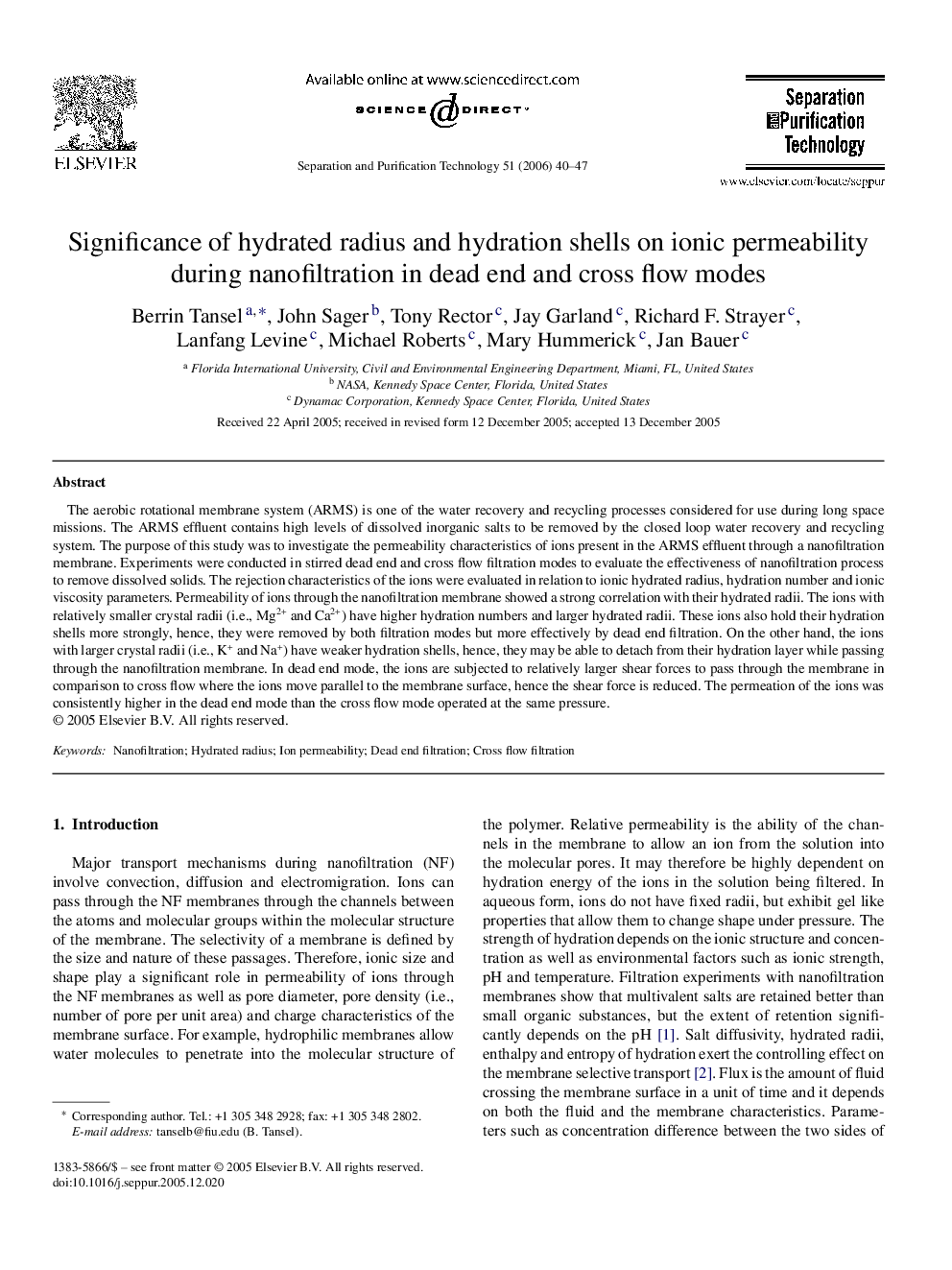| Article ID | Journal | Published Year | Pages | File Type |
|---|---|---|---|---|
| 643541 | Separation and Purification Technology | 2006 | 8 Pages |
The aerobic rotational membrane system (ARMS) is one of the water recovery and recycling processes considered for use during long space missions. The ARMS effluent contains high levels of dissolved inorganic salts to be removed by the closed loop water recovery and recycling system. The purpose of this study was to investigate the permeability characteristics of ions present in the ARMS effluent through a nanofiltration membrane. Experiments were conducted in stirred dead end and cross flow filtration modes to evaluate the effectiveness of nanofiltration process to remove dissolved solids. The rejection characteristics of the ions were evaluated in relation to ionic hydrated radius, hydration number and ionic viscosity parameters. Permeability of ions through the nanofiltration membrane showed a strong correlation with their hydrated radii. The ions with relatively smaller crystal radii (i.e., Mg2+ and Ca2+) have higher hydration numbers and larger hydrated radii. These ions also hold their hydration shells more strongly, hence, they were removed by both filtration modes but more effectively by dead end filtration. On the other hand, the ions with larger crystal radii (i.e., K+ and Na+) have weaker hydration shells, hence, they may be able to detach from their hydration layer while passing through the nanofiltration membrane. In dead end mode, the ions are subjected to relatively larger shear forces to pass through the membrane in comparison to cross flow where the ions move parallel to the membrane surface, hence the shear force is reduced. The permeation of the ions was consistently higher in the dead end mode than the cross flow mode operated at the same pressure.
